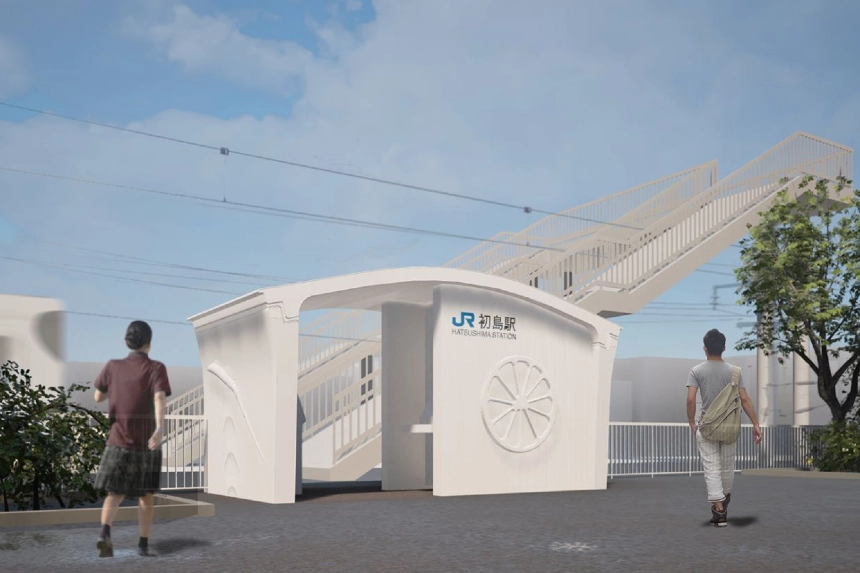Located in the city of Arida, Japan, the station is deemed as first of its kind in the whole world. Built by Japan’s West Japan Railway Company which is serving as a major rail operator in the country. The components of this station are 3D printed and were said to be made at a factory in Kumamoto located on Kyushu island, after which they were brought and assembled at the site in less than six hours. This marvellous innovation rightly signifies that Japan is living in future.
Hatshushima, the new station replaces the original wooden station built back in 1948. The automation began in 2018, and it has a single line like every other station in the country serving about 530 riders daily. The process of the building began with making the components.
It is reported that the West Japan Railway Company hired Serendix, a construction company to make the parts and Serendix reported to have taken seven days to make and assemble the parts with concrete. After it was completed the parts were transported to 804 kilometers northeast to the site of the station.
The co-founder of Serendix, Kunihiro Handa, said that construction work involves several months for completion as trains run all day leaving only the night time to work.
But in this case, it was only six hours. Reports claim people stood there looking at the work of this highly technological advancement, assembling the station in only six hours in front of their eyes. It was remarkable, as just after the last train left at 11:57, workers started unloading and assembling the parts, and the station was completed before the first train arrived at 5:45 a.m.
The building was declared to be open for commutation in July, as per the West Japan Railway Company, which also stated that if the earlier technologies were used to build it, the process would have taken two months and much more funds to complete. Technologies involving fewer workers are important for Japan due to its ageing population, the country aims to build more infrastructures that are less worker-intensive.
The president at JR West Innovations, Ryo Kawamoto, also remarked, “We believe that the significance of this project lies in the fact that the total number of people required will be reduced greatly,”








